Mastering the Ollie: A Beginner's Guide to Skateboarding
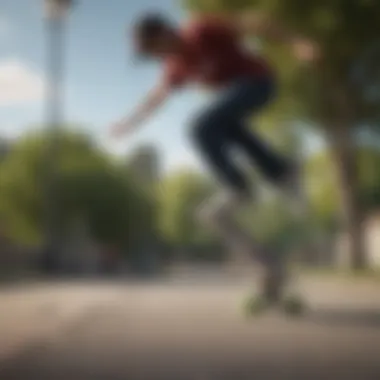
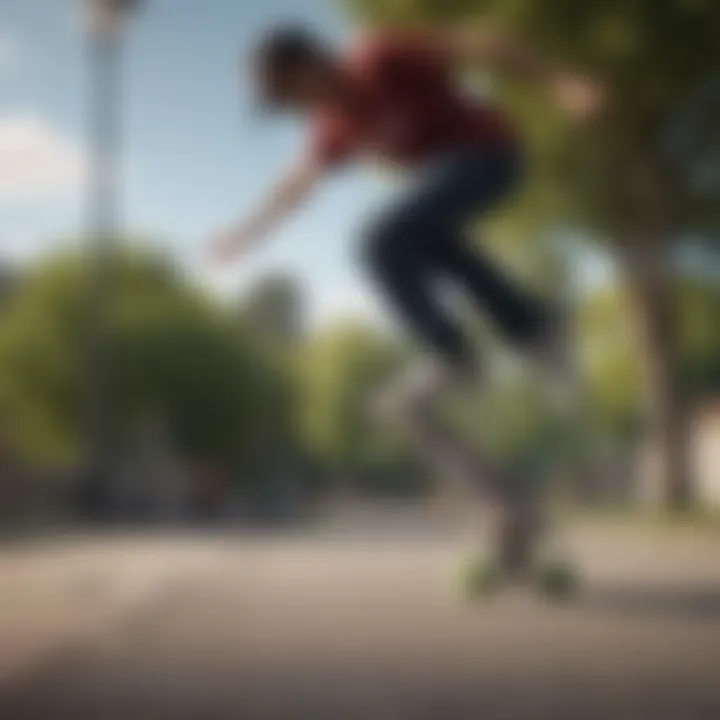
Intro
Skateboarding is not just a sport; it’s a culture, a lifestyle, and a form of expression. For many newcomers, the ollie stands as the gateway trick, the stepping stone into a world filled with flips, grinds, and aerial maneuvers. Learning how to ollie opens doors to countless other tricks, making it an essential part of a skater's repertoire.
In this guide, we aim to break down the intricacies of the ollie, stripping away any confusion and making the process manageable for complete beginners. It’s important to understand that mastering this trick involves patience and practice, as it’s about more than just hopping into the air. Understanding the mechanics will make a significant difference.
Techniques and Tips
Skill Development
Begin with the fundamentals. Before you even attempt an ollie, you should have a good grasp of basic skateboard balance and rolling. Start practicing on flat ground, where you can become familiar with how your board feels under your feet.
Once you're comfortable, focus on your foot placement. Your back foot goes on the tail of the board, while your front foot is about shoulder-width up from the middle of the board. This stance will give you the leverage needed to execute the trick effectively.
Practical Techniques
- Pop the Board: Use your back foot to push down the tail, creating upward force. This is the essential part of the ollie and gives you lift.
- Drag Your Foot: As the board begins to rise, drag your front foot up towards your front bolts. This motion helps level out the board in mid-air.
- Jump and Level: As your back foot pops the board up, jump upward with your body. The aim is to bring your knees up toward your chest while pulling the board up underneath you, creating height and control.
- Land Smoothly: As you come down, keep your knees slightly bent to absorb the impact. It’s key to land with both feet over the bolts to maintain balance and control.
Common Mistakes to Avoid
- Leaning Too Far Forward: This can lead to nosedives, where the front of the board hits the ground first.
- Not Using Enough Pressure: A weak pop won’t lift the board effectively. Be assertive with your back foot.
- Over-Dragging: While dragging your foot is essential, too much force can shift the board out of alignment, causing it to flip unexpectedly.
Gear and Equipment
Essential Gear for Beginners
Before hitting the pavement, make sure you have the right gear. An adequately sized skateboard suited to your height and skills is non-negotiable. While skateboards are somewhat personal in choice, here are some key points:
- Skateboard Deck: Find a size that feels comfortable under your feet; common widths range from 7.5 to 8.5 inches.
- Grip Tape: Good grip is critical; it ensures your feet stay planted during your ollie.
- Skate Shoes: Look for flat-soled shoes that provide a good grip and support.
Latest Innovations and Trends
Skateboarding is continually evolving, with various brands pushing the envelope on design and technology. Increasingly, boards feature specialized concaves that help during tricks like the ollie, providing depth and responsiveness. Also, many manufacturers are using lighter materials to enhance performance without sacrificing durability.
Reviews and Comparisons
When selecting your skateboard or gear, it’s beneficial to consult reviews. Websites like Reddit have numerous threads where skaters share experiences with different brands. Look out for boards like Element and Baker which are quite popular among beginners for their reliability and performance.
Safety Measures
Essential Safety Gear
As a novice, your safety should be paramount. Invest in protective gear like:
- Helmet: Always wear one to protect against head injuries.
- Wrist Guards: To safeguard against falls, which are frequent as you're learning.
- Knee Pads: These can cushion hard landings or falls.
Best Practices for Safe Participation
Find a clear, flat area to practice—ideally a skate park where other skaters can provide a positive influence. Avoid crowded places to reduce the risk of collisions.
Injury Prevention and Management
Warm up before you start practicing. Stretching and doing light exercises can prepare your body, reducing the chance of injuries. If you do fall, listen to your body. Minor aches might be part of the learning curve, but persistent pain should not be ignored.
"Learning to ollie is like learning to walk; it takes time, but with perseverance, you will get there!"
Ending
Mastering the ollie is not just about performing a skateboarding trick; it's a rite of passage that sets the foundation for further growth in the sport. Embracing the challenges, refining your technique, and adhering to safety measures will undoubtedly contribute to your development as a skater. Remember, every pro skater started somewhere, and with diligent practice, you'll soon find yourself soaring above the pavement.
Understanding the Ollie
The ollie is often regarded as the cornerstone of skateboarding. To truly grasp the dynamics of performing this trick, one must appreciate not just the technique, but the philosophy behind it. Understanding the ollie transcends mere movement; it's about connecting with the board and gaining the confidence to elevate oneself above the ground. Many new skaters dive headfirst into learning tricks, only to stumble upon the importance of mastering this fundamental jump.
In this section, we will explore what an ollie really encapsulates and why mastering it is crucial for anyone serious about skateboarding.
Definition and Purpose
An ollie, at its simplest, is a technique that allows a skater to jump into the air with their skateboard. When executed properly, it involves a combination of popping the tail of the board and dragging the front foot up the length of the board, effectively allowing the skater to gain vertical height.
The purpose of the ollie extends beyond just jumping. It serves as a gateway to countless other tricks, such as grinds, flips, and spins. Without a solid ollie, a skater will find themselves limited in the tricks they can perform, akin to trying to build a house without a sturdy foundation. It's essential for clearing obstacles, whether it’s a crack in the pavement or a set of stairs. Mastering this trick means gaining control over your board, which is imperative as you progress into more complex maneuvers.
History and Evolution
The evolution of the ollie is a story of creativity, innovation, and culture. It’s said that this trick was popularized by Tony Hawk in the late '70s and early '80s. However, before it had a name, skaters were experimenting with ways to get air while riding. The ollie wasn’t just a trick; it became a defining moment in skateboarding history when skaters realized they could leave the ground with their boards.
Its revolutionary nature, coupled with its simplicity, allowed it to seep into various forms of skating – from street to vert. The ollie's versatility led to a myriad of adaptations, morphing it into the foundation for tricks like the kickflip and heelflip.
Among the old-school skaters, mastering the ollie took a great deal of trial and error. It required resilience and an understanding of balance and timing.
Even today, the ollie remains a marker of progression within skateboarding culture. From amateur skaters in their local parks to pros defying gravity at major competitions, it continues to inspire new generations to take the leap. This shared history creates a powerful sense of community—every skater you meet is likely to share their unique experience of learning the ollie.
The ollie is not just a trick; it’s a rite of passage in the skating community.
As you embark on your own journey to master the ollie, remember the importance of taking the time to understand it fully. The skills you develop will serve as the launching pad for your future skateboarding adventures.
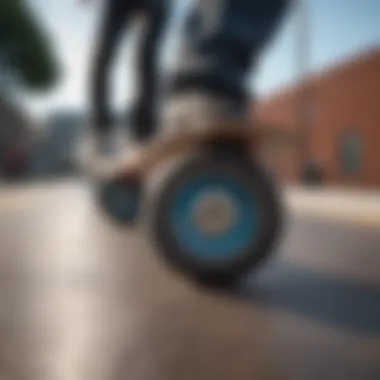
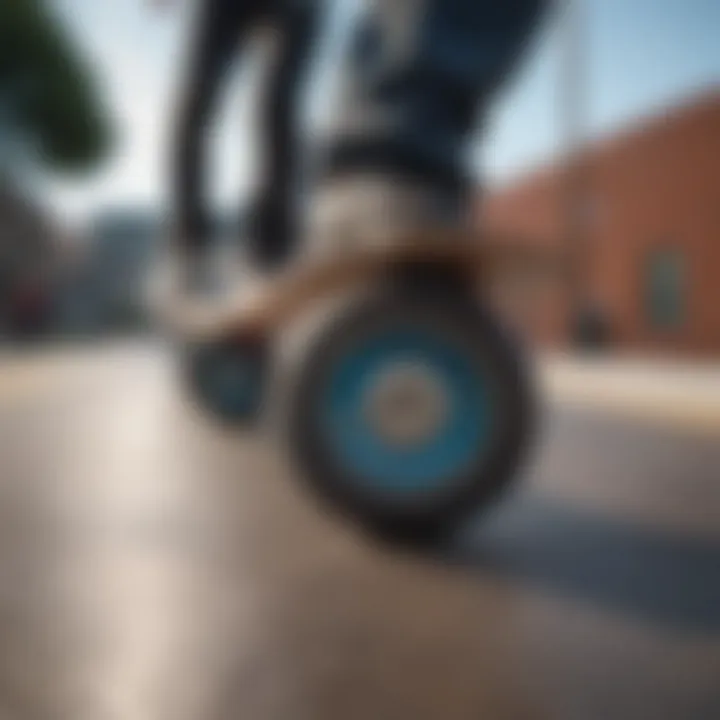
Essential Gear and Equipment
When embarking on the journey to master the ollie, understanding the essential gear and equipment is crucial. This section offers insight into what you need not only for executing tricks but also for ensuring safety and maximizing your performance. The right gear can make a world of difference, offering both comfort and control as you navigate the board.
Choosing the Right Skateboard
Selecting the right skateboard is one of the first steps you should take as a beginner. Understanding different skateboard types, shapes, and sizes is key. There’s no one-size-fits-all approach; it’s all about personal preference. A skateboard comprised of high-quality materials will provide durability as you begin to practice.
When considering a skateboard, pay attention to the following factors:
- Deck Size: A skateboard’s width varies; a board that is too narrow may not provide enough stability, while one that's too wide could feel heavy and unwieldy. Most beginners might find a width of 7.5 to 8.0 inches a sweet spot.
- Material: Maple is a popular choice due to its resilience. Look for boards with a good number of plies, ideally at least seven.
- Trucks and Wheels: Choose trucks that match your deck width to maintain balance. Wheel hardness also matters—softer wheels provide better grip and are suitable for rough surfaces, whereas harder wheels are ideal for smooth terrains like skate parks.
Many novice skaters prefer complete skateboards as these are assembled with compatible parts and often come at a lower cost. Taking the time to browse different options can ensure you find the right setup for your style.
Protective Gear Recommendations
Safety cannot be emphasized enough for anyone getting into skateboarding. While the thrill of the ollie brings excitement, the risk of falls and accidents is very real. Investing in protective gear is not merely a suggestion but a necessity.
Here's a breakdown of must-have protective gear:
- Helmet: A sturdy helmet is a fundamental piece of equipment. It should fit snugly without being too tight and always meet safety standards. Brands like Pro-Tec and Triple Eight are recognized for their quality options.
- Wrist Guards: These can minimize the chance of spraining your wrist during a fall, a common issue for beginners. Look for guards with cushioning that won’t restrict movement.
- Knee and Elbow Pads: They serve the dual purpose of protection and comfort. Opt for pads that are lightweight and breathable, so you don’t feel weighed down while skating.
- Shoes: Invest in skate shoes that provide grip and flexibility. Look for shoes with flat soles for better board feel. Brands like Vans or Nike SB are popular choices amongst serious skaters.
The right protective gear not only safeguards against injuries but also builds confidence. Knowing you’re adequately equipped frees you to focus on mastering the ollie without constantly worrying about potential harm.
"Protecting yourself while you learn an art form is just as essential as the art itself. Without the right gear, progress might come at a high price."
In summary, investing in the proper skateboard and protective gear sets the foundation for a safer and more enjoyable journey into mastering the ollie. This essential gear enables learners to focus on their techniques while minimizing risk.
The Physics Behind the Ollie
Understanding the physics behind the ollie is crucial for aspiring skateboarders, as it lays the foundation for mastering this iconic trick. The ollie combines various physical principles that emphasize the relationships between forces, motion, and body mechanics. By grasping these concepts, skaters can better manipulate their boards and enhance their overall performance. Not only does this knowledge improve technique, but it also contributes to a deeper appreciation for the artistry of skateboarding.
Gravity and Momentum
Gravity acts as the relentless force pulling everything back to the earth. In the context of the ollie, understanding gravity helps skaters know how to counteract it. When attempting an ollie, a skater must exert enough upward force to lift both themselves and their board off the ground. This upward thrust is what creates height in the jump, giving the illusion of floating.
Momentum is equally important. As the skater rides forward, they gather speed, which plays a pivotal role when performing tricks. When the tail of the skateboard hits the ground, this forward momentum is converted into vertical lift. If you think about it, that upward thrust combined with speed will allow the skater to keep the board underneath them during the jump.
Consider the following scenarios when thinking about gravity and momentum during an ollie:
- Take-Off: The board needs to be properly popped with the rear foot to initiate the jump. An insufficient pop results in a low jump, failing to clear obstacles.
- Air Time: Once airborne, the skater must maintain balance and readjust their body to keep the board aligned with their feet. This momentum management dictates how elegantly the trick can be executed.
- Landing: As the skater descends, gravitational force takes over again. Properly timing the landing is essential for maintaining speed and control upon hit the ground.
"Mastering timing and motion is the secret sauce to an ollie that looks as good as it feels."
Body Mechanics
Your body plays a tremendous role in executing the ollie, so understanding how to manipulate body mechanics can make or break the trick. A skater's body must work in sync with the skateboard, thus enhancing control and balance throughout the whole process.
Key Elements of Body Mechanics:
- Positioning: The skateboarder’s stance is vital. Feet positioning must be precise; with the back foot over the tail and the front foot centered along the board. Adjusting your center of gravity allows for greater stability.
- Knees and Hips: Bending knees and hips appropriately is essential. As the skater prepares for the take-off, they need to lower their body slightly. This squatting motion loads potential energy, creating a coil effect, which is released during the jump.
- Upper Body: The arms should help in balancing the skater during the ollie. Using them to stabilize, especially upon landing, can prevent wipeouts. It might seem trivial, but minor shifts in upper body positioning can lead to significant changes in outcome.
Lastly, practicing these elements requires awareness. Skaters must feel the moment when they initiate the jump and adjust their movements accordingly. Monitoring body mechanics throughout the process will facilitate a more natural ollie, gradually aligning all pieces into a dynamic whole.
In summary, grasping the underlying physics involved with gravity, momentum, and body mechanics forms the core knowledge every skateboarder needs to perform an ollie effectively. As one learns to master these principles, both the quality of their tricks and their overall skateboarding experience will drastically improve.
Step-by-Step Technique
Mastering the ollie is not just a matter of whimsy; it's an intricate dance between your body, the board, and the ground. This section hones in on the essential technique of executing an ollie, which is the building block for many other tricks in skateboarding. Understanding how to perform each step correctly is vital. It sets the foundation for confident skateboarding and ensures safety as you explore more advanced stunts. Each step has its own nuances, and neglecting any part could hinder your progress.
Positioning Your Feet
Getting your feet in the right spot is non-negotiable. Your back foot should rest firmly on the tail of the board while your front foot is positioned about a third of the way from the front. This placement gives you the lever effect needed to pop the tail effectively as you prepare for lift-off. The angle of your feet matters too—slightly angled towards the tail will allow for a better pop. Keep your knees bent and be ready to spring into action. It might feel awkward at first, but practice makes perfect. Once you feel comfortable with foot positioning, you're halfway there.
Popping the Tail
The crux of the ollie is the confident pop of the tail. You want to push down with your back foot as if you’re trying to slam the tail into the ground. This action sends the board upwards. Be mindful of using not just your foot but your whole leg to generate the necessary force. A common mistake is popping too softly, which results in a measly skimming of the board on the ground instead of a significant lift. It's essential to commit fully—when you pop, think of it as leaping into space.
Leveling the Skateboard
As you pop the tail, you will instinctively want to look down at the board, but resist that urge. Instead, you should actively pull your knees up toward your chest while simultaneously dragging your front foot toward the tail. This motion levels out the board in mid-air, preventing it from nosediving and giving you a smoother, more controlled ollie. Remember that patience is key here; the leveling phase takes practice to master but is crucial for a well-executed ollie.
Landing the Ollie
Good landings are often overlooked. Many beginners focus too much on the takeoff and neglect how they’ll touch down. As you come back down, it’s vital to prepare to absorb the impact. Bend your knees as you land, allowing the board to stabilize below you. Keep your weight centered over the trucks. If you lean too far forward or back, you risk falling off the board. Ideally, land with both feet over the bolts on the board to maintain balance. Remember, a smooth landing adds to the overall fluidity of the trick.
"Skateboarding is about perseverance and adaptability. Get the steps down, and with practice, the ollie will become second nature."
Mastering the ollie is entirely doable with this approach. Make it a habit to revisit these steps, and soon you’ll be popping ollies like a seasoned pro.
Common Mistakes to Avoid
When attempting to master the ollie, it's critical to understand the common mistakes that can hinder progress. These pitfalls, often unnoticed by beginners, can lead to frustration and discouragement. By being aware of these issues, riders can refine their technique and improve their performance significantly. Here’s a closer look at these common mistakes and how to navigate around them:
Incorrect Stance
One of the most fundamental aspects of executing an ollie is the stance. Beginners often overlook the significance of positioning their feet properly.
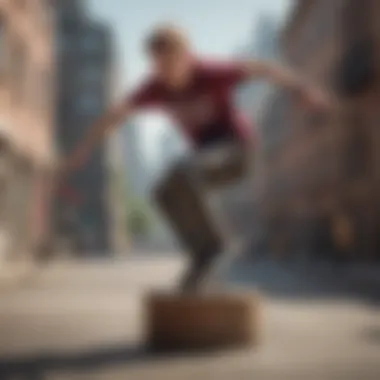
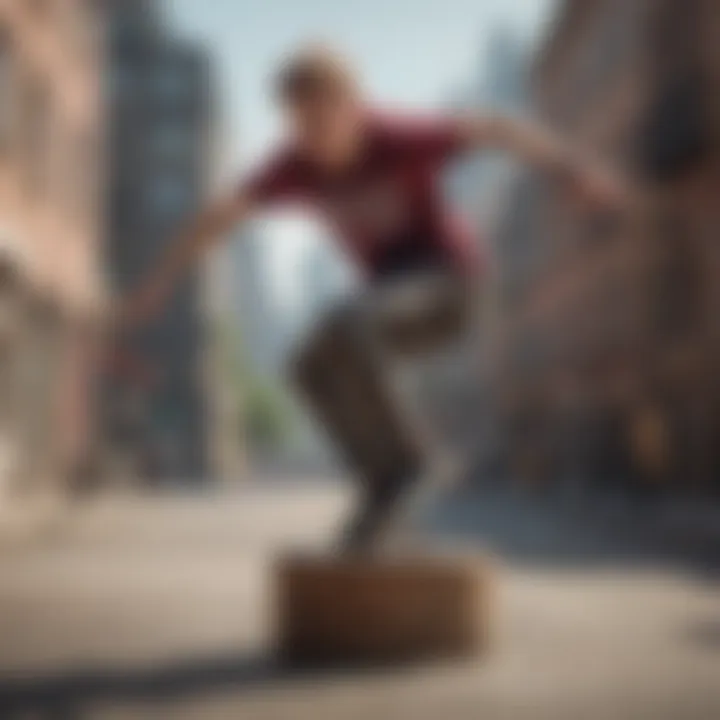
Having an incorrect stance can throw off your balance completely. Your back foot should be placed at the tail of the skateboard, while your front foot should be positioned near the middle, angled slightly. Many skaters have a tendency to place their feet too wide or too far forward. This not only makes it harder to pop the board, but it can also lead to instability landing.
It’s crucial to fine-tune your position. Make sure your feet are aligned parallel to the skateboard’s edge. When you get that stance right, it feels like putting on the perfect pair of shoes - comfortable and just right. Practice in a relaxed posture, because tension will only make the process harder.
Insufficient Pop
Pop is what brings your board to life during an ollie. When beginners don’t pop enough, the result is a lackluster jump, often leaving them confused as to why their ollie doesn't seem to elevate.
To pop effectively, timing is key. It’s not just about pushing down on the tail; it’s also about snapping it up as you drag your front foot. Many new skaters underemphasize this aspect, which leads to flat landings.
Think of the board like a catapult. If you don’t apply enough force when launching it, don’t expect it to soar. The right amount of pop will give you that boost, allowing the board to gain height during your jump. Spend time feeling the necessary pressure on the tail and practice your timing to ensure you get that proper lift.
Poor Timing
Timing in skateboarding can be likened to a musical rhythm. If you skip a beat or play out of turn, the outcome falls flat. In the ollie, poor timing between popping the board and dragging your front foot can lead to disaster.
To execute the ollie correctly, you need to synchronize popping the tail of your board with dragging your front foot up. A common tendency is to pop and then drag; however, the drag should follow the pop almost simultaneously for a successful lift.
When timing is off, you might land awkwardly or not lift at all. Think of practicing with a metronome to set that perfect beat. Take your time, and gain a feel for the rhythm of the ollie process.
"Practice does not make perfect. Only perfect practice makes perfect." - Vince Lombardi
By recognizing these common mistakes and addressing them methodically, beginners can cut through the noise and develop their ollie technique effectively. Each mistake is a learning opportunity, and mastering them leads to greater confidence and skill on the board.
Practicing the Ollie
When it comes to mastering the ollie, the old adage rings true: practice makes perfect. It’s not just about throwing your board under your feet; it’s about developing that fluidity, rhythm, and muscle memory that comes only with time and dedication. Practicing the ollie isn’t merely a step in your skateboarding journey; it's a leap toward becoming a proficient skater. Every wobble, every accidental face plant, and even the awkward attempts at popping the board are integral parts of the learning curve.
When you’re out there, the objective is not just to land the trick but to understand the nuances behind it. Skateboarding is a physical art, blending the body and board into a dance of sorts. Every successful ollie solidifies that connection and fosters growth. Let’s break down some nitty-gritty aspects of how to practice effectively.
Finding the Right Location
Location is key when practicing the ollie. A smooth, flat surface is ideal, as uneven ground can throw off your balance and confidence. Look for spaces that are less crowded; a park after school hours, an empty parking lot, or even your driveway can serve as great practice areas.
Consider these factors:
- Surface Quality: Look for asphalt or concrete that doesn’t have cracks or bumps. A good surface allows for consistency in practice.
- Distraction Level: Fewer people and obstacles mean less stress. Focus on your technique without the chaos around.
- Safety: Ensure there are no sharp objects or hazards around. If you fall, you’d want it to be on a forgiving surface.
Setting Realistic Goals
Goal setting is another critical piece of the puzzle. If you aim too high too soon, frustration can set in fast. Instead, break it down into smaller, attainable goals. Perhaps start by just getting the feel of popping the board. Then, once you get comfortable, focus on sliding your foot up correctly. Eventually, shoot for a proper landing. This kind of stepwise approach builds confidence while sharpening your skills.
Here are some tips for effective goal-setting:
- SMART Goals: Make your goals Specific, Measurable, Achievable, Relevant, and Time-bound. Aim to have a certain number of successful ollies each session.
- Daily Check-ins: At the end of each practice, take a moment to reflect on what worked and what didn’t. Adjust your goals for the next session based on that insight.
Monitoring Progress
Keeping track of your progress can profoundly impact your learning journey. Write down the number of successful ollies you achieve each session. Video yourself occasionally; you might see things from a fresh perspective.
This could highlight areas for improvement that you wouldn’t notice otherwise. You can keep a skate journal where you reflect on what worked, what didn’t, and how you felt about your performance. This learning documentation allows for reflection and gives you a road map on what to focus on in upcoming sessions.
"The road to becoming a great skater is paved with patience and practice."
Incorporating all these elements into your practice routine sets you up for long-term success. Stay focused, keep grinding, and before you know it, you’ll be nailing that ollie like a pro! With every practice session, you’re not just attempting a trick; you’re embracing the thrill of skateboarding, inching closer toward greater accomplishments in the sport.
Incorporating the Ollie into Your Skateboarding
When it comes to skateboarding, the ollie is much more than just a trick; it’s the foundation upon which other skills are built. Understanding how to effectively incorporate the ollie into your skateboarding can vastly enhance your overall performance and style. Not only does the ollie elevate your tricks, but it also opens the door to a world of new possibilities on your board. This section goes deeper into the importance of the ollie, detailing its benefits and considerations in the context of skateboarding.
Basic Combinations and Variations
Once you’ve mastered the ollie, the fun really begins as you start experimenting with combinations and variations. The ollie can serve as a building block for a range of tricks. Here are a few combinations that will take your skateboarding to the next level:
- Ollie to Manual: After launching into the ollie, shift your weight back to balance solely on your rear wheels, creating that stylish manual stance.
- Ollie to Kickflip: Add flair to your ollie by propelling your board with a kickflip mid-air. This variation not only showcases your skills, but it also looks great in videos.
- Ollie to Smith Grind: For those looking to transition into street skating, following an ollie onto a ledge with a Smith grind can make you feel like a pro.
With each new trick, ensure you focus on maintaining balance and body position. Practicing these combinations will build muscle memory, making future attempts smoother and more controlled.
Transitioning to Other Tricks
As you grow more confident with the ollie, transitioning into other tricks becomes an exhilarating part of the experience. The spillover effects of the ollie on other skateboarding maneuvers cannot be overstated. For instance, tricks like the pop shove-it, tail grab, and the heel flip often rely on the principles set in the ollie. Here are a few key notes on this transition:
- Foundation for Advanced Tricks: A solid ollie is essential for more complex tricks. Envision it as the launchpad – the better your ollie, the higher you can aim.
- Explore Different Surfaces: Practice landing the ollie in various locations like ramps or flat ground areas. Doing so helps in adjusting your technique, which is crucial for transitioning.
- Learning Sequence: Start with ollie variations and gradually build towards more intricate transitions.
"The ollie is not just a trick; it’s a rite of passage in skateboarding that prepares you for everything that comes after."
Tapping into the energy of the ollie will enrich your skateboarding repertoire. Engage with your community, share ideas, and practice together to accelerate your progress. With time and effort, you'll not only embrace the ollie but also reinvent what it means to skate, unlocking potential you may have never considered.
The Role of Community and Mentorship
When it comes to mastering the ollie and skateboarding in general, the role of community and mentorship cannot be overstated. Having a network of fellow skaters can not only enhance one’s skills but also imparts valuable tips and insights that one might miss when learning alone. The skateboard family is vast and varied, hopping on boards of different shapes and sizes, each bringing unique experiences to the table. This shared knowledge can serve as a stepping stone for beginners aiming to refine their technique and enhance creativity on the board.
Mentorship is particularly vital, as seasoned skaters often provide guidance that’s not easily gleaned from tutorials or guides. They’ve been through the grind and know the ins and outs of the ollie, the unexpected hurdles that can crop up along the way. Their advice can greatly influence one's understanding of technique and mechanics, paving the way for smoother progress.
Finding Guidance from Experienced Skaters
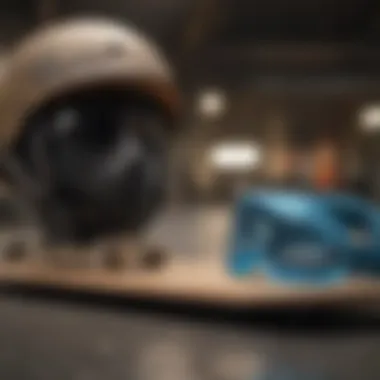
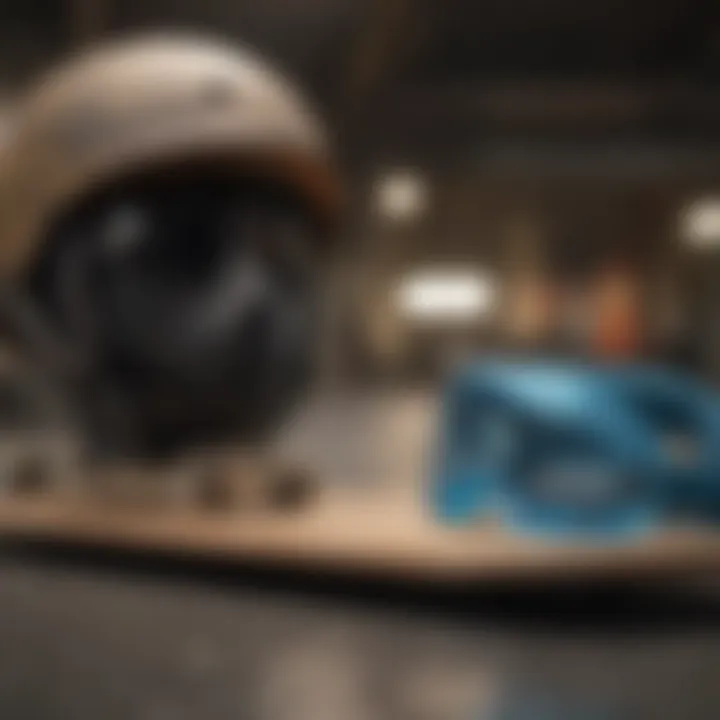
Getting tips from experienced skaters can be like uncovering hidden treasure. They’re a wealth of knowledge, having faced their own trials and errors. Here are some ways to seek advice:
- Local Skate Shops: Many of them host workshops or group sessions, providing a great opportunity to learn from others.
- Skate Parks: These hotspots are buzzing with skaters of all ages. Initiating conversations can lead to impromptu lessons or insights that are simply invaluable.
- Online Communities: Websites and platforms like Reddit and various skateboarding forums allow access to a global community, where novices can ask questions and receive guidance from veterans in the sport.
Finding the right mentor involves more than just choosing anyone; it's about connecting with someone who has a similar skating style or philosophy.
The Importance of Practice Groups
Engaging in practice groups can amplify one’s learning experience. It’s not just about rolling around aimlessly; it’s about mutual motivation, shared goals, and collective growth. Here’s how they play a crucial role:
- Peer Support: Watching others attempt the ollie can inspire you to refine your approach, while also providing a sense of camaraderie.
- Feedback from Friends: Within a group, you can receive constructive criticism from your peers, helping to spot mistakes in your technique that you might not even notice.
- Structured Practice Sessions: Groups often come up with drills and practice routines, making sessions productive rather than just socializing.
Connecting with fellow skaters compounds the learning curve for all involved. Remember, every pro was once a beginner, and a tight-knit community can help foster that growth ultimately.
"Alone, we can do so little; together, we can do so much."
Incorporating feedback and learning from the community lays a solid groundwork for mastering not just the ollie but the broader spectrum of skateboarding skills. It’s about sharing the ride and moving forward together.
Safety Considerations
Skateboarding is an exhilarating sport, but it comes with its fair share of risks. Understanding safety considerations is paramount for anyone looking to master the ollie or dabble in skateboarding. Safety ensures not only the longevity of an individual’s participation in the sport but also enhances the learning experience. Maintaining proper safety measures can dramatically reduce the likelihood of injuries and accidents.
Practicing the ollie can be demanding; it requires physical exertion and a fair amount of balance. By being mindful of safety, one can enjoy their time on the board while minimizing potential hazards.
"An ounce of prevention is worth a pound of cure."
This quote is incredibly pertinent in the context of skateboarding, underlining how preventive measures can significantly curtail accidents.
Recognizing Risks in Skateboarding
Before rolling out on the board, acknowledgment of the risks involved in skateboarding is essential. Not everyone realizes that skateboarding can lead to injuries like sprains, fractures, or worse if one is not cautious. A handful of commonly recognized risks include:
- Falls: Losing balance can lead to falls, which are among the primary reasons for injuries in skateboarding.
- Collisions: Especially in crowded areas, collisions with other skaters or obstacles can occur.
- Bumps and Uneven Surfaces: Cracks in sidewalks or potholes can surprise even seasoned skaters, leading to wipeouts.
- High Speeds: Zooming down hills increases the chances of loss of control, amplifying the risk of injury.
By knowing these risks, beginners can take proactive steps and avoid missteps that can turn a fun session into a trip to the emergency room.
Wearing the Right Protective Equipment
Nobody races into a storm without an umbrella, and the same applies to skateboarding. Gear up to protect oneself! Wearing appropriate protective equipment is vital for safeguarding against accidents. Here’s a list of essential gear every skateboarder should consider:
- Helmet: This is non-negotiable. Impact from a fall can lead to serious head injuries.
- Wrist Guards: These support the wrists, which are often the first body part to hit the ground in a fall.
- Knee and Elbow Pads: They absorb the shock of impacts and prevent scrapes and bruises.
- Skate Shoes: Proper footwear can enhance grip on the board and reduce slipping.
Now, some may argue that protective gear can feel bulky or clunky, but comfort improves with practice. More importantly, this gear makes a difference when you catch a nasty spill. Not to mention, many skateboard communities emphasize safety and even provide workshops for proper gear usage. So, mixing safety with style doesn't have to be a hard nut to crack; it's a step worth taking when on the board.
By prioritizing safety considerations in skateboarding, beginners can embark on their journey to mastering the ollie with confidence. Wearing the right equipment can provide not only protection but also boost one’s confidence while trying out this foundational trick.
Online Tutorials and Videos
Today, the internet is a treasure trove for skateboarders. There’s a multitude of online tutorials and videos that break down the ollie and various other tricks into digestible segments. These visual resources allow you to see the technique in action, demonstrating the nuances of foot placement, timing, and body mechanics.
YouTube, for instance, boasts countless channels dedicated to skateboarding. Here, you can find everything from beginner basics to advanced tricks, all presented by seasoned skaters who know the ropes. Here are a few key benefits of utilizing online tutorials:
- Visual Learning: Seeing the ollie performed can clarify movements that are hard to grasp through text alone.
- Tutorial Diversity: Different instructors offer varied teaching styles. Finding one that resonates with you can enhance comprehension.
- Access to Communities: Platforms like Reddit have dedicated skateboarding threads where you can discuss videos and share experiences.
"Watching experienced skaters execute an ollie gives contextual understanding that words alone can’t convey."
Books and Guides on Skateboarding Techniques
While online tutorials are invaluable, traditional books and guides serve their own unique purpose. They often provide thorough analyses and comprehensive insights into skateboarding mechanics, right from the physics at play to the finer points of executing tricks. Here are some advantages of having a well-rounded library on skateboarding:
- In-Depth Knowledge: Books can go deeper into the science and art of skateboarding, explaining not just how to do a trick, but why it works.
- Structured Learning: Many guides are organized methodically, assisting readers in progressing from foundational skills to more complex maneuvers.
- Offline Reference: If the internet isn’t an option—say, during a skate session at the park—having a book handy allows you to refer to tips and tricks anytime.
Some notable books you might consider include "The Skateboarder's Journal" for progressive tips and "Skateboarding: Book of Tricks" for a comprehensive look at various maneuvers.
Closure
The journey toward mastering the ollie is not merely about executing a trick; it encapsulates the broader experience of learning, growing, and pushing one's limits in skateboarding. The ollie stands as a fundamental skill for skaters, laying the foundation for a plethora of tricks and maneuvers that will follow. Understanding this conclusion brings attention to several vital elements.
Embracing the learning process is crucial. Each tumble and trial contributes to a deeper mastery of this art, revealing not just how to perform an ollie, but also how to adapt body movements, harness balance, and build confidence. With practice, the awkward movement transforms into fluid motion, leading you closer to that seamless glide.
The benefits of perseverance cannot be overstated. For those who may hit a wall, it’s useful to remember that skateboarding is as much about resilience as it is about talent. The culture thrives on the stories of those who didn’t give up despite countless falls, whipping up a sense of camaraderie and shared experience among enthusiasts. This community support serves as an encouragement, inspiring you to keep going when frustration peaks.
Additional items like setting personal benchmarks and celebrating small wins cultivate a positive learning experience. It's sometimes the little victories that boost morale — maybe it’s sticking the landing or gaining a few extra inches in height. No achievement, no matter how minor, should go unnoticed, as each serves as a stepping stone toward greater skills in the future.
In summary, the significance of the conclusion is not just a wrap-up but a reflection on growth, learning from mistakes, and preparing for what comes next. Engaging with the essence of skateboarding through the ollie opens doors to advanced tricks, a better understanding of motion, and ultimately, fosters a sense of belonging in an exhilarating community.
Embracing the Journey
The journey of mastering the ollie is fraught with challenges, yet it offers unparalleled rewards. Taking the first push on your skateboard to attempt this trick might feel completely nerve-wracking at first. Still, as you spend more time on your board, your comfort zone widens, giving way to new experiences and learning curves. This phase of development is not just about landing an ollie; it's a holistic engagement with skateboarding as an art form.
The process cultivates various skills — from enhancing your balance to increasing your awareness of your body's position in relation to the board. Each attempt, whether successful or not, teaches you something invaluable. Embracing your stumbles and victories alike allows for an enriched understanding of your potential as a skater.
Building relationships with fellow skaters can also shape this journey. Whether it be watching a more experienced skater nail their ollie or collaborating with a buddy who’s learning alongside you, these interactions will provide insights into methods that may not be evident in tutorials or videos. In essence, the journey is as valuable as the destination.
"Every skater knows that the road to mastery is paved with patience and practice."
Step Towards Advanced Skills
Having laid a solid foundation with the ollie, you're now equipped to explore a world of more advanced skills that can redefine your skateboarding experience. Mastery of the ollie opens a variety of doors — think kickflips, heelflips, or even grinds. These moves often leverage the basic principles you’ve encountered while perfecting your ollie. Understanding how to control the board during the ollie aids tremendously in grasping the intricacies of each new trick.
The gradual progression feels both rewarding and exhilarating. Once you’ve solidified your ollie, experimenting with different styles can transform your riding. You might find yourself captivated by stair set tricks, ledges, or transitions that push your newfound abilities to the limit.
As you tackle these advanced techniques, setting incremental goals proves advantageous. Instead of diving headlong into a kickflip, for example, focus on landing a solid ollie while moving, then on experimenting with more flick and spin variations. This methodical approach reduces frustration while allowing you to appreciate the nuances of skateboarding a little more.
Ultimately, the ollie serves as a launchpad. Following through on your learning with dedication and an open mind fosters a deeper appreciation for the sport and can lead you to become not just a skater, but a true participant in the culture of skateboarding. With time and effort, you will find yourself navigating more complex tricks as if you’ve been doing it for years.







